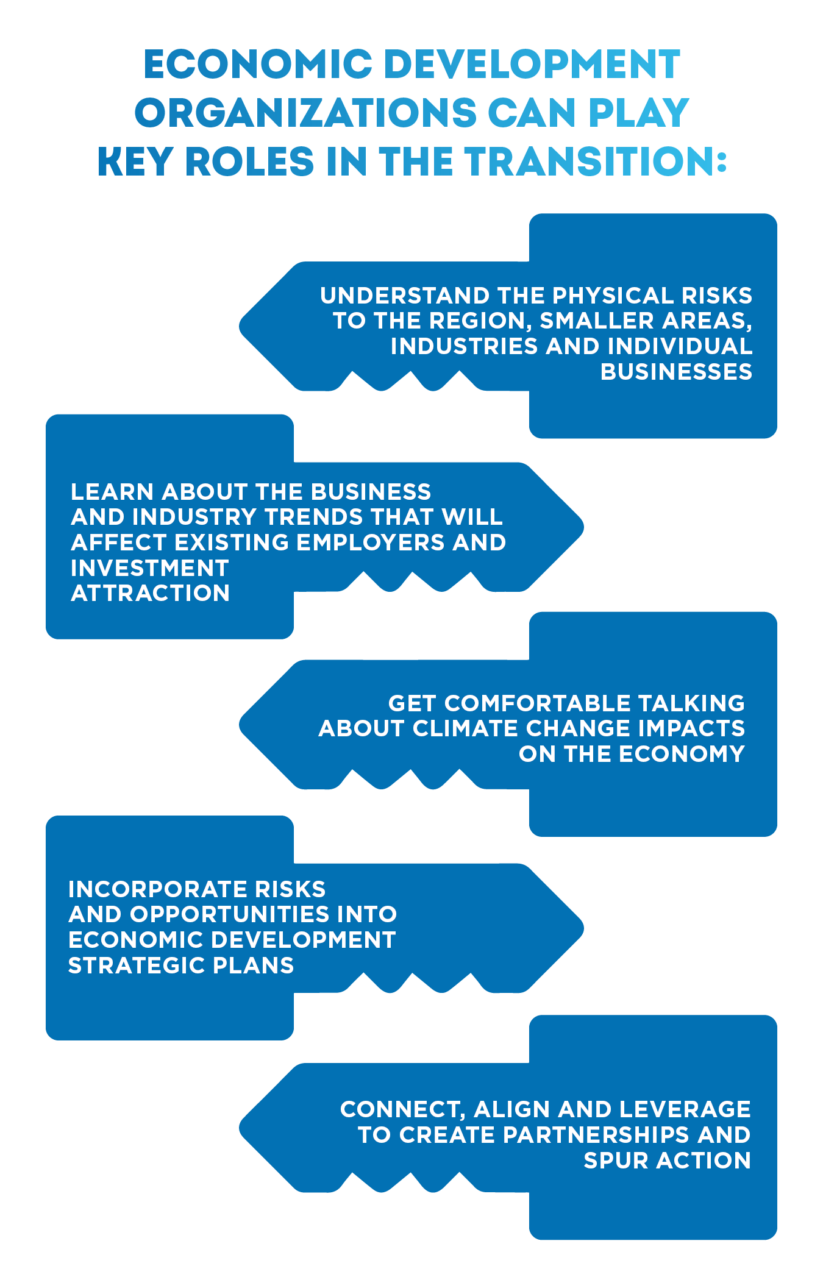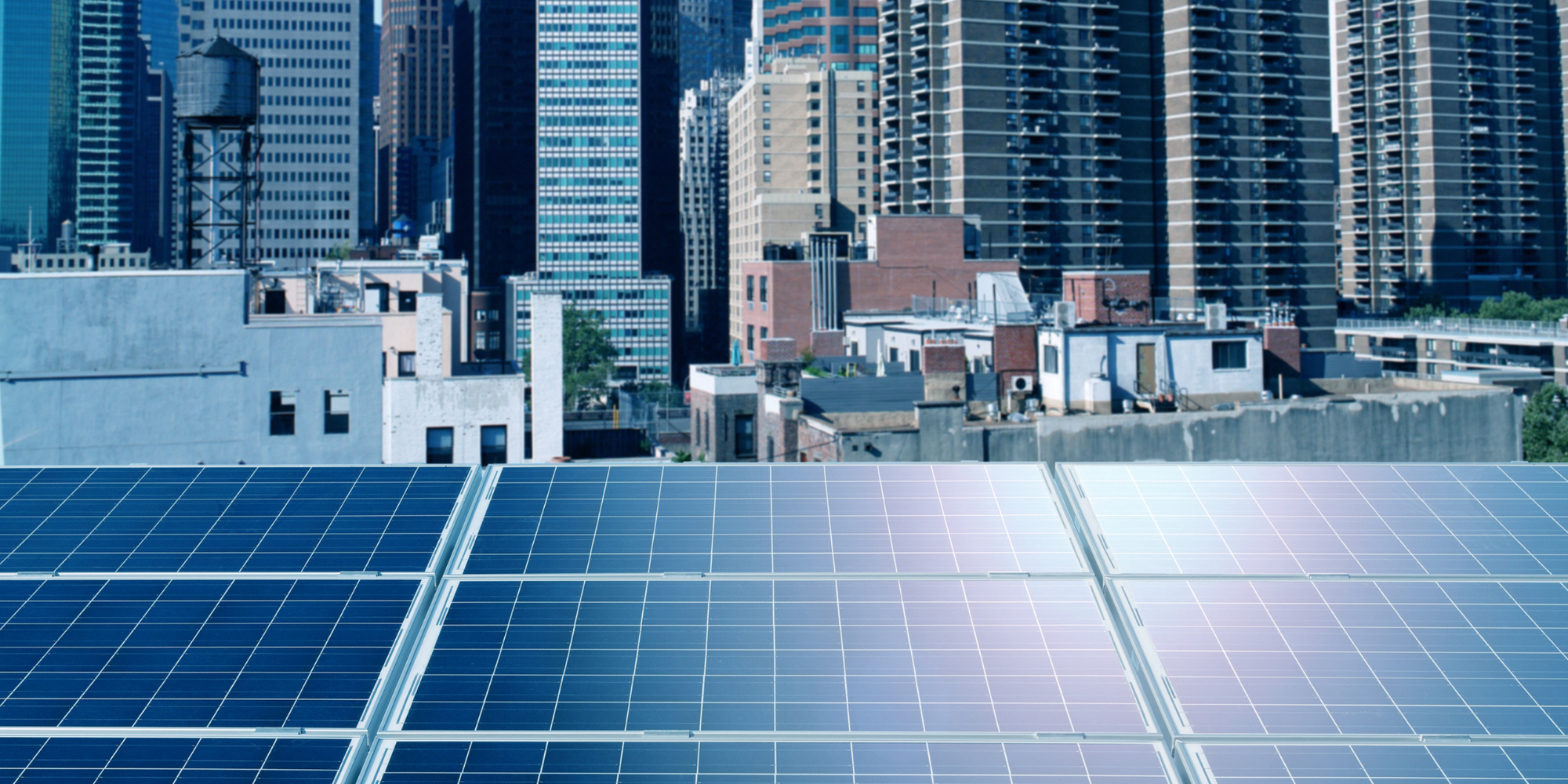Cities are on the frontlines in the response to climate change – seeking to increase physical resilience, invest in sustainability measures that will reduce costs, energy usage, emissions, and ensure the safety of disadvantaged populations.
Protecting a community’s jobs and tax base amid a changing climate is important, too. Economic development offices and organizations (EDOs) have key roles to play in helping their local economies mitigate climate-related disruptions and helping businesses take advantage of new opportunities in a low-carbon economy. That’s the focus of a recent report from the International Economic Development Council’s Economic Development Research Partners program, Economic Development in a Changing Climate: Minimizing Risks and Maximizing Opportunities.
EDOs can assess climate risks to their businesses and local economies by thinking about them in three buckets: physical risks, caused by extreme weather and long-term shifts in global weather patterns; transition risks, related to policy, technology and attitudinal changes in the adjustment to a low-carbon economy; and workforce risks, related to impacts on worker retention and attraction, equity and climate migration.
Alongside these risks come opportunities for cities to retain, attract and grow investment, to support their workforce and to create more resilient communities.
- Opportunities for retaining investment include helping businesses lower costs and improve efficiencies and competitiveness; helping businesses tap new markets; and assisting businesses with resiliency and continuity planning.
- Opportunities for attracting and growing investment include leveraging federal dollars to mitigate risks and improve economic development assets, as well as attracting and growing new businesses and industries based on local advantages such as supply chains; physical and geographical assets; institutional and technological assets and supportive public policies.
- Opportunities for developing the workforce include accessing new federal funding to improve the quality of life and workforce participation rates for low-income people and people of color; taking advantage of green economy opportunities to provide access to training and jobs for disadvantaged groups; leveraging a community’s green reputation to attract workers and helping local businesses understand the role of sustainability in talent attraction and retention.
Five key actions can help cities and EDOs navigate the climate-impacted economy of the future:
Understand the physical risks to the region and smaller areas within it, as well as industries, individual businesses and the workforce. To keep the assets the community already has, the first step is to understand the threats to vulnerable businesses, industries and people, and then to prioritize resilience actions. City EDOs should become familiar with local and regional resilience plans and advocate for actions that will protect economic assets.

Learn about the business and industry trends that will affect existing employers and investment growth and attraction. EDOs should educate themselves, partners and stakeholders about how these trends are taking shape and are likely to play out. This requires some practice looking around the corner.
Get comfortable talking about the impacts of climate change on the economy. When talking to community stakeholders – especially those who may be skeptical of the need for climate action – focus on shared values, such as a healthy local economy. In terms of business engagement, companies are already making decisions based on climate change, so economic developers and their partners need to be versed in their concerns and able to speak the same language.
Incorporate climate risks and opportunities into economic development strategic plans. Knowledge of physical risks and climate-related business trends is key to a SWOT analysis that will inform a city’s EDO’s work regarding business retention, new business development, entrepreneurship and workforce development.
Connect, align and leverage to create partnerships and spur action. Economic developers have a broad view of their communities’ economic strengths, weaknesses, opportunities and threats that few others have. They are well-positioned as connectors and can bring together government, businesses, education providers, anchor institutions, nonprofits and other stakeholders for conversations about a community’s risks and opportunities and to take advantage of new federal dollars.
Read the Report
Read the International Economic Development Council’s new report on climate change and economic development.

About the Author:
Louise Anderson is the Senior Director of Research at the International Economic Development Council (IEDC).









